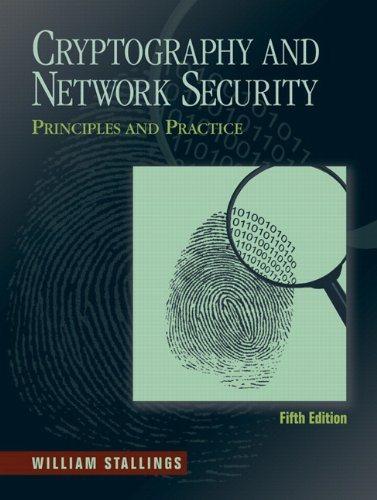In any use of pseudorandom numbers, whether for encryption, simulation, or statistical design, it is dangerous to
Question:
In any use of pseudorandom numbers, whether for encryption, simulation, or statistical design, it is dangerous to trust blindly the random number generator that happens to be available in your computer’s system library. [PARK88] found that many contemporary textbooks and programming packages make use of flawed algorithms for pseudorandom number generation. This exercise will enable you to test your system.
The test is based on a theorem attributed to Ernesto Cesaro (see [KNUT98] for a proof), which states the following: Given two randomly chosen integers, and , the probability that gcd(x, y) = 1 is 6/π2. Use this theorem in a program to determine statistically the value of π. The main program should call three subprograms: the random number generator from the system library to generate the random integers; a subprogram to calculate the greatest common divisor of two integers using Euclid’s Algorithm; and a subprogram that calculates square roots. If these latter two programs are not available, you will have to write them as well. The main program should loop through a large number of random numbers to give an estimate of the aforementioned probability. From this, it is a simple matter to solve for your estimate of π.
If the result is close to 3.14, congratulations! If not, then the result is probably low, usually a value of around 2.7.Why would such an inferior result be obtained
Step by Step Answer:






